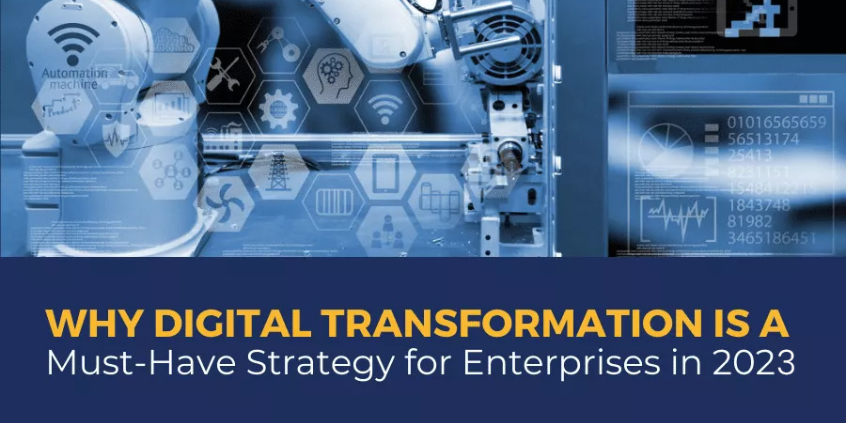Pulling off digital transformation is more complicated in an organization than its adoption in the market. But the end result of succeeding in digital manufacturing transformation is far better and efficient than any other form of change in the organization.
Producers, manufacturers, service providers, etc., are facing a continuous conundrum of innovating and improving their way of doing business. As the need to upgrade is at par with survival techniques, ignoring digital transformation solutions is not an option.
Instead, when organizations are faced with fast changing work culture and challenges, they need to do everything to prevent the derailment of digital transformation systems.
Steps to Ensure Success With Digital Transformation Solutions in Manufacturing Industry
1. Have the Right Architecture In Place
A strong and relevant structure customized to ensure digital manufacturing is essential to ensure success. Technology is supposed to remove and reduce the friction experienced within the workspace.
So, you must set up the right technologies for different processes associated with digitalization in manufacturing. These include data consumption, changing standard operating procedures, changing employee roles, etc.
Having the right action plan or architecture set in place helps streamline and smooth out the transition from a traditional to a digitally-enabled environment. The plan must account for the integration of different departmental functions, including the resistance to change from the employees.
2. Filling the Skills Gap
Employees may resist digital transformation in manufacturing, but that should not become a reason for derailment. In other words, the company leaders and managers must provide the employees with the right training, skills, and education to become digitally mature.
They can run reskilling, and upskilling programs within the organization helping the employees embrace the digital change and help the organization accelerate its way to a better future.
Once the company has included digital manufacturing procedures or have included digital solutions in the work procedures, it attracts and retains better talent.
According to a SAP report, 71% of the leaders confirm that digital transformation has helped them attract better talent and 35% confirm that digital transformation has changed their talent management systems.
Ergo, you need to ensure that the employees are skilled, educated, and aware of the new technologies to prevent derailing your digital transformation efforts.
Also Read : Top Five Ways IoT Brings Transformation in Food and Beverage Industry
3. Build Effective Communication Channels
The success of your plan and digital transformation framework depends on your ability to build effective communication channels. For best results, the communication must go from the leaders of digital change in the organization.
Having digital-savvy leaders working amongst the entire organization. To ensure changes in digital manufacturing, organizations need to initiate changes at all levels and capabilities.
Having digital leaders in place and then communicating the changes to the organization workforce will create better engagement. This is because when the leadership of the company is more involved in the digital transformation solutions, provisioning derailment can be stopped and prevented.
In the present digital transformation scenario, less than 1/3rd of the companies have appointed a chief digital officer. But the ones which have appointed a CDO are 1.6X more likely to achieve success.
4. Test, Test, and then Implement
Setting up the processes for digital manufacturing is easier said than done. Yes, there will be hurdles along the way, some so big that they can easily thwart your efforts and lead to failure.
But as it’s a big project, testing it and observing the outcome can help you predict the changes for implementing the same on a larger scale. This can be done either by creating a demo environment or operating one of the many organizational departments on the lines of digital transformation.
For instance, you can begin with digital manufacturing, which means that you can include digital processing in the manufacturing department. Understanding how every aspect of the department reacts to the digital transformation, you can prepare a handbook for effective implementation for the entire organization.
5. Build a Framework for Digital Transformation
Before beginning your journey towards digital manufacturing and transformation, build a framework that will serve as your beacon of progress. In other words, decide on three things;
– What changes will be implemented in the organization?
– When will these changes be implemented?
– Why are you moving ahead with this transformation?
Once these things are decided, share them with your employees and departments. This will help them understand the need to change better and also see the benefits of bringing in this sort of change. After this, set goals and expectations by breaking the entire process into understandable pieces.
Conclusion
Digital transformation is an empowering activity, but it can also pose some challenges along the way. Not accounting for these hurdles and moving forward unprepared can reverse the progress. However, you can prevent any sort of hiccups along the way, provided you are prepared to address these issues.
With the achievement of digitalization in manufacturing, the companies and its leaders set themselves apart. As disruptive as the technologies associated with digital transformation. You also need a strong support structure that ensures a smooth transition from traditional to digital. With successful digitalization in manufacturing, you adapt, scale, and improve according to the requirements.





